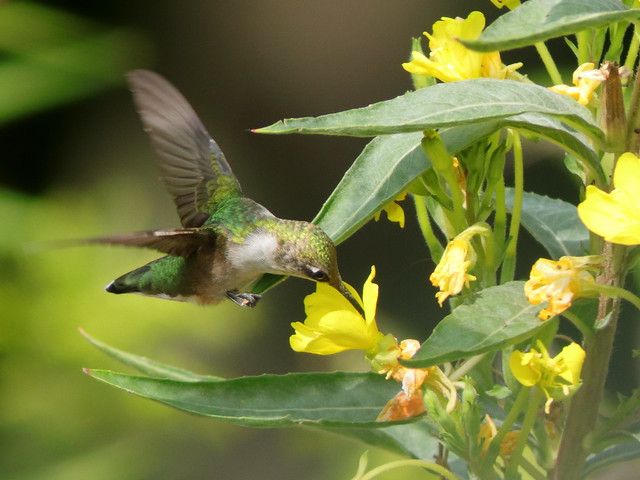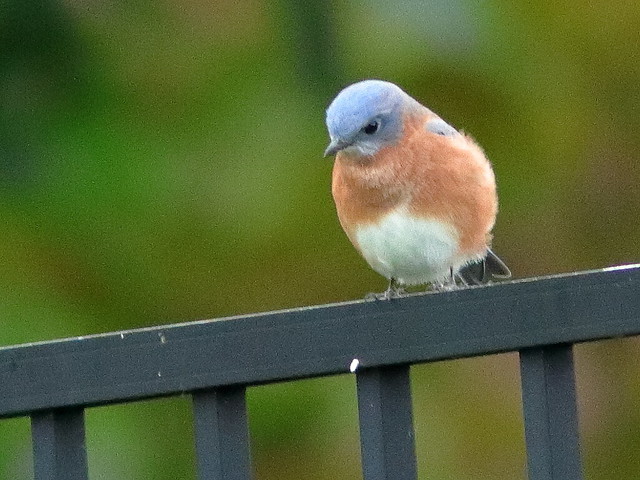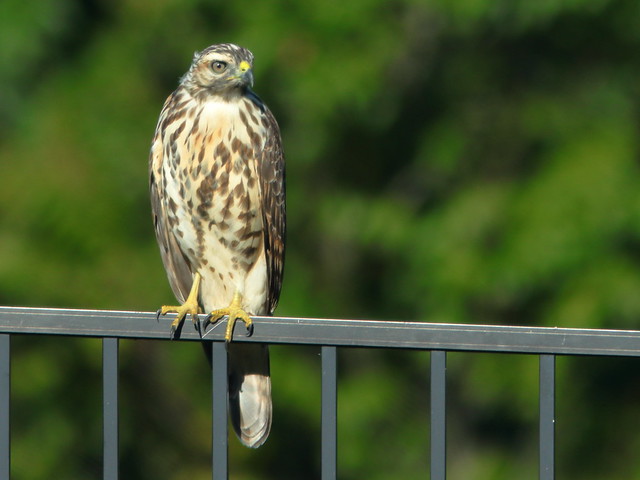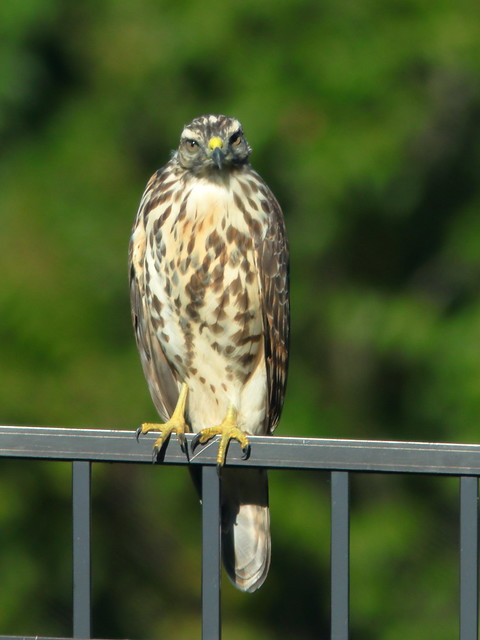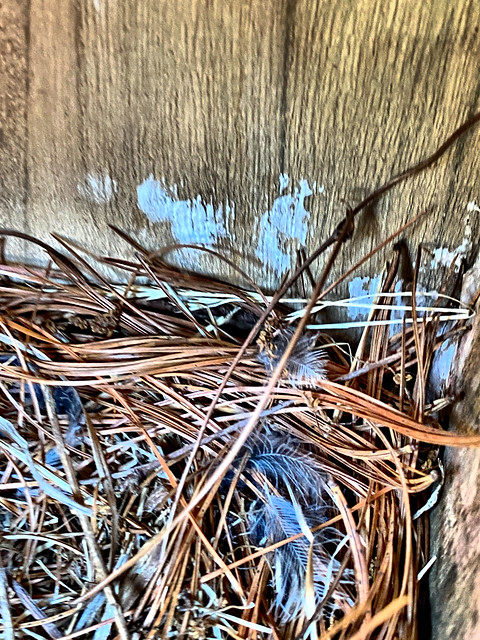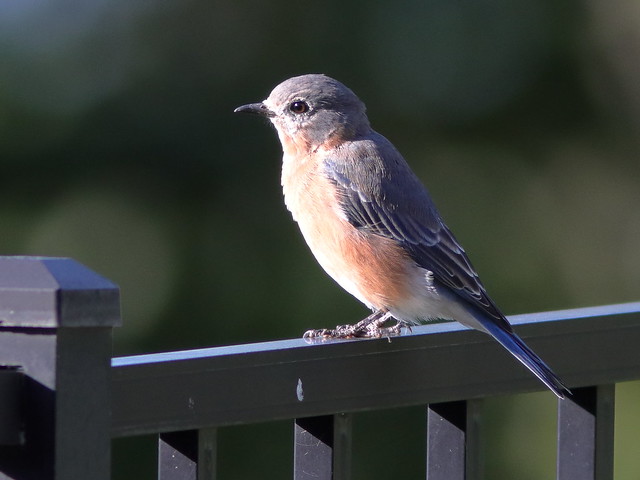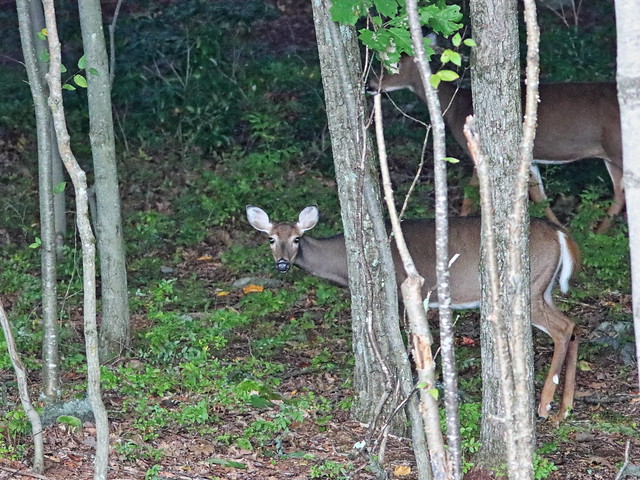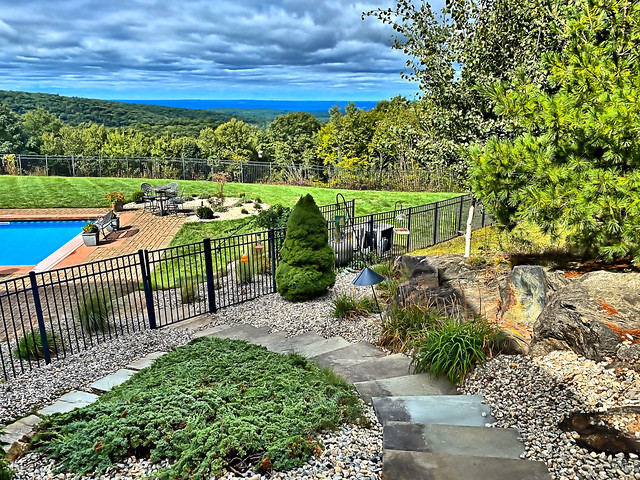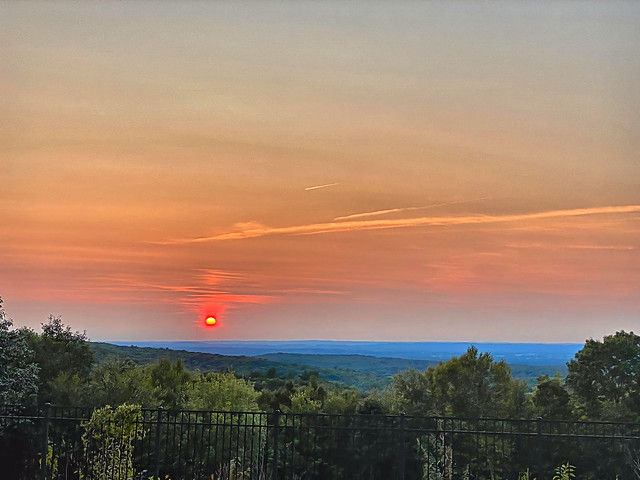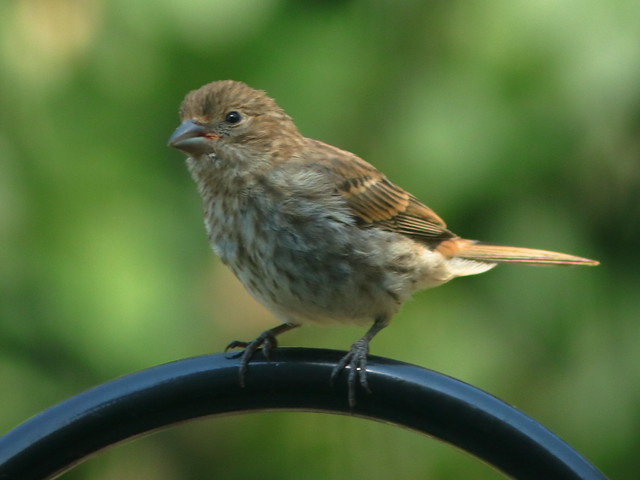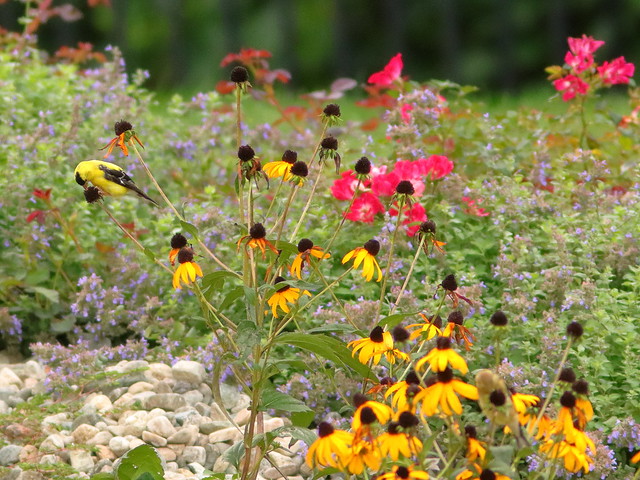Autumn has settled in quickly here in central Connecticut, with temperatures dropping even into the low 40s° F ( ~ 6° C) some nights. Before disappearing just a week ago, the Ruby-throated Hummingbirds became scarce. No more than one visited the feeders until the last one stopped by on September 21. This was my final encounter with one in a natural setting:
A cold front moved in from the northwest on September 22. The trees over the Loveland Preserve are showing a blush of yellow:
Yesterday morning the view of downtown Hartford, eleven miles distant, was particularly crisp. I enhanced my image by layering three exposures to create an HDR effect in COREL PaintShop Pro:
Small flocks of Eastern Bluebirds have been foraging for berries and insects. This male posed nicely on the fence rail:
Another bluebird was suddenly visited by two other common species, a House Finch and an Eastern Phoebe:
The phoebes are finding fewer flying insects. They and the bluebirds are eating berries. Here, a phoebe has plucked the blueberry-like fruit of the Virginia Creeper:
The Chipping Sparrows have molted out of their distinctive breeding plumage into a more subdued pattern.
Back on April 17:
Now, on September 25:
There was much action at the seed feeder, which will soon increase with the arrival of winter residents. So as not to attract bears, we bring in the feeders each night. Here, a male House Finch, a White-breasted Nuthatch and a Black-capped Chickadee gather to feast:
A highlight was the appearance of a wandering winter visitor which breeds in northern Connecticut and over northern New England and Canada, but rarely strays into our area before October or November. It was a female Purple Finch. So far this month I have seen and photographed, possibly this same one, on three separate days:
While it is similar to the House Finch, the Purple Finch is bulkier and has a proportionally larger head and a distinctive face pattern. The upper portion of the beak (culmen) of this House Finch is noticeably more curved.:
We have had golden or amber sunsets this past week. We were accustomed to seeing bright red ones all summer. There is maybe a scientific reason for this, as the sun's rays must pierce more of the earth's atmosphere in the colder months-- are the warmer colors filtered out, or are these just random events?
September 25:
September 27:
I try to find reflections, especially along Diamond Lake, but the best I could do this week was this incidental capture of my distorted face and iPhone as I photographed mugs which celebrate the Irish surnames of my and MaryLou's grandmothers:
= = = = = = = = = = = = = = =
My Corner of the World
________________________________________________
Please visit the links to all these posts to see some excellent photos on display
________________________________________________

